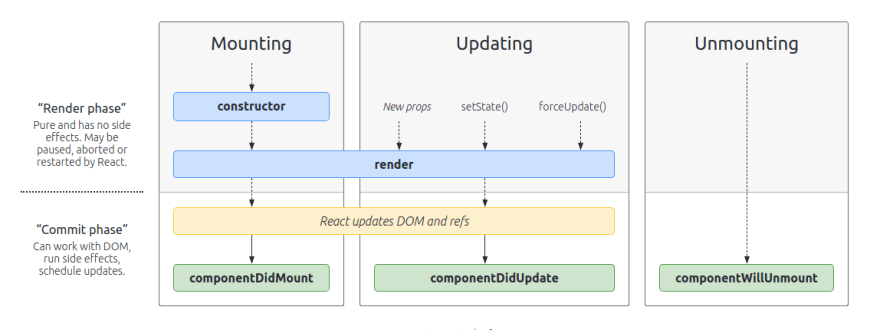

🛑 STOP thinking about React lifecycle methods.
source link: https://dev.to/swastikyadav/stop-thinking-about-react-lifecycle-methods-248
Go to the source link to view the article. You can view the picture content, updated content and better typesetting reading experience. If the link is broken, please click the button below to view the snapshot at that time.

🛑 STOP thinking about React lifecycle methods.
In this post let's talk about the paradigm shift from lifecycle methods to state synchronization and hooks in ReactJs.
Here is a video version of this post, if that's what you prefer.
When class components were a thing in ReactJs (Well it still is, but no one likes them anymore), we use to think a lot in terms of mouting, unmounting, and lifecycle methods.
Whenever a class component mounts, the lifecycle methods are called in following sequence: constructor → render → DOM and refs update → componentDidMount
But then came React Hooks, and we started to think in terms of dependency array.
And, often times we ask:
What is the hooks equivalent to [some lifecycle method]?
The quick answer is that hooks are a paradigm shift from thinking in terms of "lifecycles" to thinking in terms of "state and synchronization with DOM".
Trying to take the old paradigm and apply it to hooks just doesn't work out very well and can hold you back.
useEffect(fn) // fn invoked on all updates
useEffect(fn, []) // invoked on mount
useEffect(fn, [a, b, c]) // invoked if any of the members of the array are updated
The above snippet is not the right way to think about React hook.
Lifecycles are gone, but we still think of useEffect with empty dep array as componentDidMount, and that’s not the right way to think about React Hooks.
Now I want to present to you the right way to think about react hooks.
State Synchronization
See, the question is not "when does this effect run" the question is "which state does this effect synchronizes with"
useEffect(fn) // useEffect with no dep array, sync with all state
useEffect(fn, []) // useEffect with empty dep array, sync with no state
useEffect(fn, [stateA, stateB]) // useEffect with stateA and stateB in dep array sync with stateA and stateB.
And that’s how you should think about React Hooks.
Hope, you found this video useful, and if so, make sure show your support by subscribing.
I also run a weekly newsletter, so you can join me there also: https://www.getrevue.co/profile/8020lessons
Thank You!
Recommend
About Joyk
Aggregate valuable and interesting links.
Joyk means Joy of geeK

